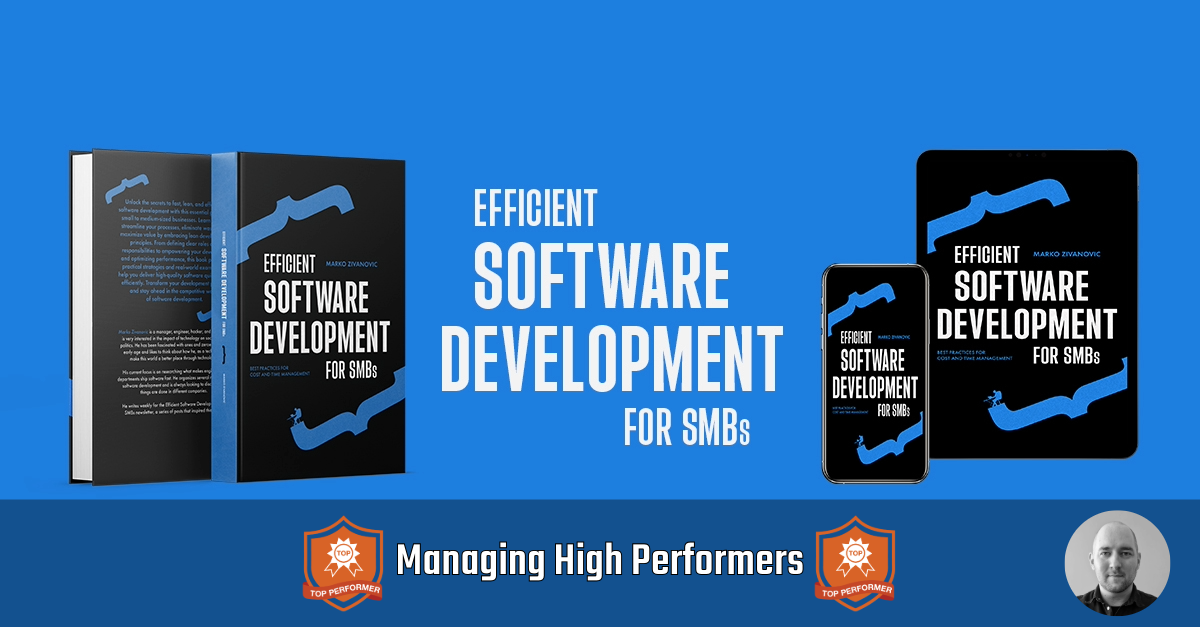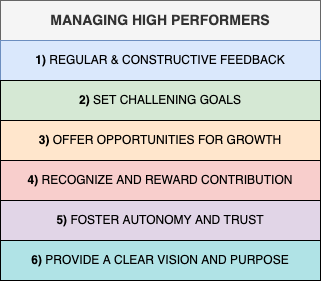Managing High Performers

High-performing developers are your most valuable asset, and you should treat them as such. They drive innovation, set the standard for excellence, and often lead by example. However, managing high performers requires a strategic approach to ensure they remain motivated, engaged, and continuously challenged. A common mistake organizations make is not managing their highest performers. The thinking is always the same: Why fix something that’s not broken?
While high performers don’t need the detail and attention of lower performers or their junior colleagues, ensuring there’s a managing plan in place for them can make or break your company.
This article provides actionable steps for managing and retaining high-performing developers, ensuring they continue contributing to your organization’s success.
Understanding High Performers
Before diving into the strategies, we must define the characteristics of high performers:
- Consistently Exceeding Expectations: High performers consistently deliver exceptional results, often exceeding their defined roles.
- Proactive and Innovative: They take initiative, suggest new ideas, and find creative solutions to complex problems.
- Continuous Learners: High performers always seek opportunities to learn and grow their skills.
- Natural Leaders: They often mentor others and lead by example, even if they don’t hold formal leadership positions.
Actionable Strategies for Managing High Performers

I broke down managing high performers into six categories: regular and constructive feedback, setting challenging goals, offering growth opportunities, recognizing and rewarding contributions, fostering autonomy and trust, and finally, providing a clear vision and purpose.
The sections below break down each category into specific actions you can implement in your organization’s management workflow.
Provide Regular and Constructive Feedback
- Frequent Check-ins: Schedule regular one-on-one meetings to provide feedback and discuss progress. This should be more frequent than the standard performance review cycle.
- Specific Praise: Recognize and praise particular achievements. Highlight the impact of their work on the team and the organization.
- Constructive Criticism: Offer constructive feedback to help them improve. High performers value feedback that helps them grow.
- Implementation Tip: Use tools like Slack for quick, informal feedback and platforms like 15Five for more structured, weekly check-ins.
Set Challenging Goals
- Stretch Assignments: Assign projects that push their boundaries and require them to develop new skills.
- Personal Development Goals: Work with them to set personal and professional development goals. Ensure these goals are ambitious yet achievable.
- Implementation Tip: Use SMART criteria (Specific, Measurable, Achievable, Relevant, Time-bound) for setting goals. Platforms like Asana or Trello can help track these goals.
Offer Opportunities for Growth
- Professional Development: Provide access to courses, conferences, and workshops. Allocate a budget for continuous learning.
- Mentorship Programs: Encourage them to mentor junior developers. This helps the mentees and reinforces the high performer’s leadership skills.
- Career Pathing: Discuss and plan their career path within the organization. Show them the potential for advancement and new responsibilities.
- Implementation Tip: Create a professional development plan for each high performer and review it regularly during one-on-ones.
Recognize and Reward Contributions
- Public Recognition: Acknowledge their achievements in team meetings, company newsletters, or internal communication platforms.
- Monetary Rewards: Consider bonuses, salary increases, or stock options as tangible rewards for their contributions.
- Non-Monetary Rewards: Offer perks like extra vacation days, flexible working hours, or a choice of projects.
- Implementation Tip: Implement an employee recognition program using platforms like Bonusly to make recognition a regular part of your company culture.
Foster Autonomy and Trust
- Delegate Responsibility: Give them autonomy over their projects. Trust them to make decisions and manage their tasks.
- Encourage Innovation: Create an environment where they feel safe to experiment and take calculated risks.
- Implementation Tip: Use project management tools like Jira or Monday.com to delegate tasks and track progress without micromanaging.
Provide a Clear Vision and Purpose
- Communicate the Vision: Regularly communicate the company’s vision and how their work contributes to the larger goals.
- Involve Them in Decision-Making: Involve high performers in strategic decisions and solicit their input on important matters.
- Implementation Tip: Hold quarterly meetings to discuss the company’s vision and strategy and their role in achieving these objectives.
I’m working hard on compiling detailed and actionable steps you can follow and use in your organization in my upcoming book, Efficient Software Development for SMBs, which will be released on November 1st, 2024!
